Frame pools for summer cottages: types and selection rules
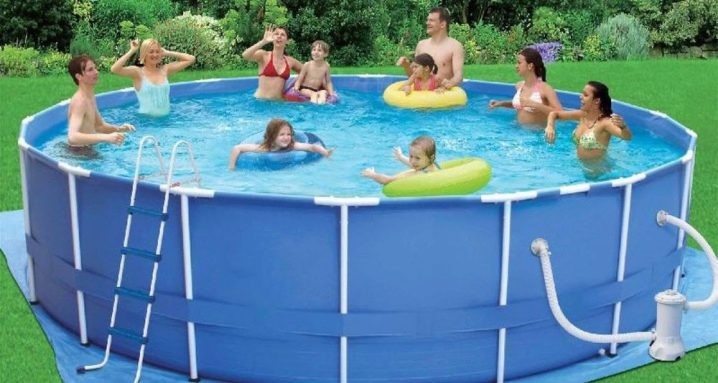
Summer is a time of relaxation and fun. This warm season is always associated with the sun, beach, sea, or at least a river or lake. But what if you did not manage to go on a trip and you have to spend the summer at a summer cottage, next to which there is not a single reservoir, but you want to swim? There is an exit. You can arrange a pond right next to the house, and without much effort. A structure such as a frame pool can help with this.
Types of structures
The frame pool is a bowl made of a three-layer flexible material, which is fixed on tubular supports (frame). The rigidity of the structure increases when the bowl is filled with water.
The material from which the pool tank is made is very durable due to the coating with a moisture-resistant polymer, which, even under the influence of high pressure, will not let water through.
In round structures, the water load on the sides is transferred to the top ring of the pool. In rectangular (square) pools, to reinforce the side walls, inserts of sheet material are provided, which increase the rigidity of the prefabricated frame.
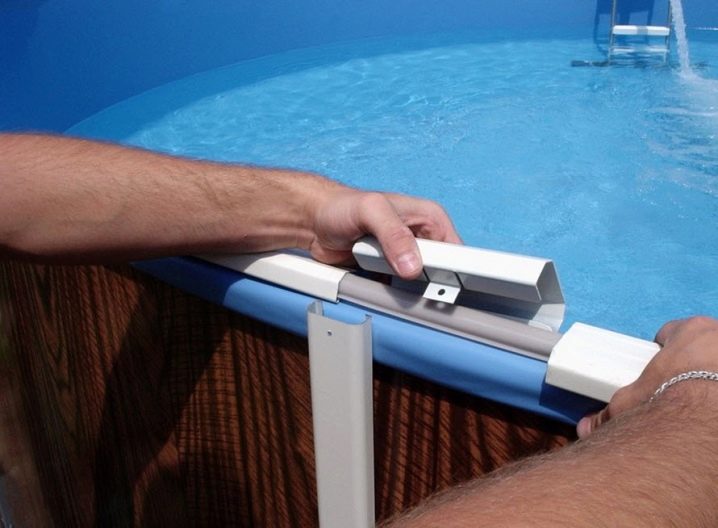
The strength of the structure is also ensured by the rigid attachment of the frame part of the system to the platform and the use of reinforcing tape at the edges and at the junction of the frame and the flexible bowl.
By the type of frame, prefabricated pools can be sheet and core.
- The pivot structure involves fixing the bowl to metal beams reinforced with stiffening ribs, the sheet one - to metal sheets. The rod structure is easy to assemble, but such pools are not very deep.
- The sheet construction is more reliable. These pools can be up to two meters deep and are easy to maintain.
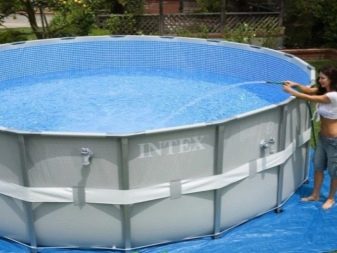
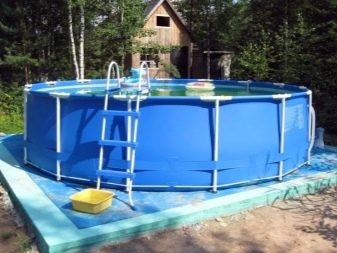
According to the season of use, frame pools are divided into all-season and seasonal.
The seasonal pool is intended for use only during warm periods. At the end of the swimming season, such a structure is disassembled and sent for storage. Such pools most often have a frame made of metal hollow pipes, which are connected with special fasteners. The pool tank itself is made of three layers of PVC. The bowl is located inside the frame, firmly fixed and only then filled with water.
Seasonal designs, due to constant assembly and disassembly, do not have a very long service life. They are enough for a maximum of 5-7 seasons. Moreover, during the period of operation, deformations and breakdowns of the frame are not excluded.
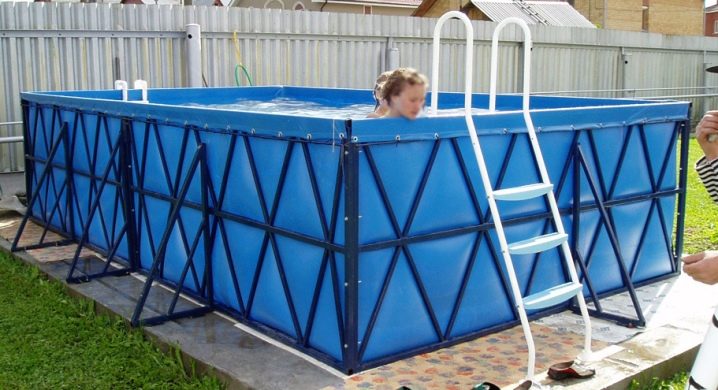
It is quite another matter - all-season pools, which are frost-resistant structures that do not need to be dismantled in the autumn-winter period. Outwardly, such structures are practically no different from seasonal-type pools. But at the same time, all-season structures have a greater margin of safety than their summer counterparts, due to the increased wall thickness (about 8 mm) and the application of a special anti-corrosion coating on them.
In addition, the frame of such a pool is additionally reinforced with transverse beams and struts. Thanks to this, the all-season pool can cope with the loads even from the frozen water in it. That is why this type of structure can be safely left outside in the cold season, without fear for its integrity.

All-season pools, as well as summer ones, can be easily disassembled in order to move to another place, unless, of course, the structure is permanently installed. The difference between this type of pool is in a longer service life (up to 15 years) and simplified maintenance due to the presence of a filtration system similar to that used in real concrete pools.
Advantages and disadvantages
Unlike inflatable pools, frame structures have a number of obvious advantages:
- Reliable container and frame material. The bowl of the frame reservoir is made of durable synthetic material, the rupture of which, even under the influence of mechanical stress, is practically excluded. Such pools are resistant to both high temperatures (rays of the scorching sun) and low (winter frosts);
- Frame structures have a longer period of use. With proper care, they can last up to ten years;
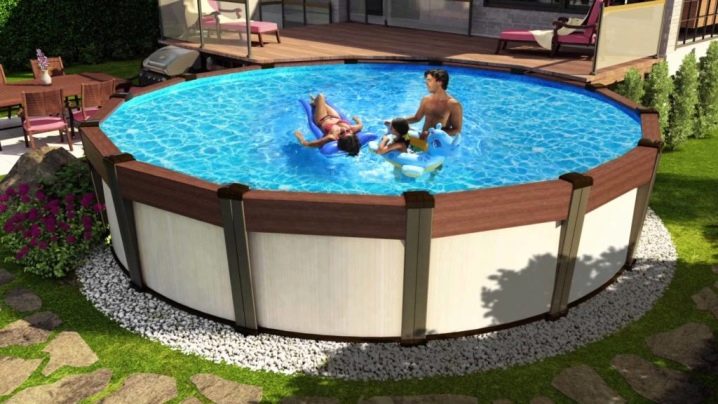
- The structure is easy to install and disassemble. No special tools or special skills required. It is enough to carefully read the instructions and follow them clearly;
- The possibility of deepening the structure;
- The ability to move from place to place;
- Variety of forms;
- Dimensions and depth sufficient for swimming (from 1.2 to 2.4 m);

- Quite simple maintenance, which consists in filling and draining water, cleaning the bowl and structures, preserving for the cold season;
- The set initially includes a filter, a pump, a cloth under the bottom, a debris catcher, a brush;
- Possibility of completing the pool with additional options in the form of filters, ladders, special covering tents.
The only drawback of a frame pool in comparison with an inflatable pool is its high price, which is fully repaid by the positive qualities that it possesses.
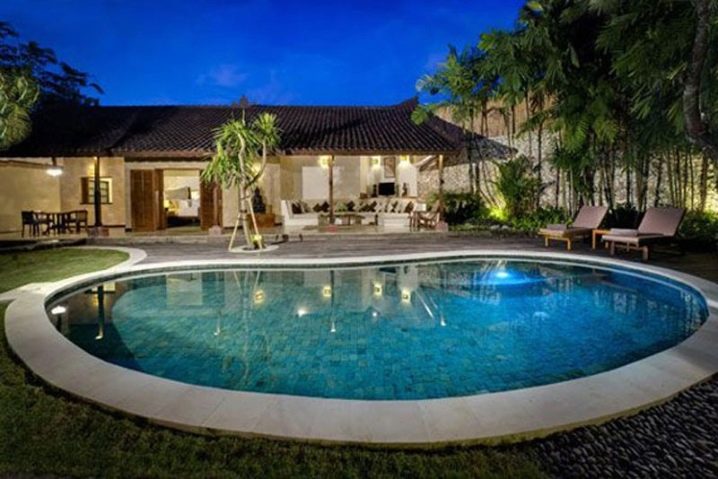
Shapes and sizes
Frame pools for summer cottages can be very different in shape - round, rectangular, square, in the form of an eight, an oval or a polygon.
The sizes of containers also vary. There are small pools. They are designed for small children. The purchase of such a structure is unlikely to be profitable, it will be easier and cheaper to simply install an inflatable pool for kids.
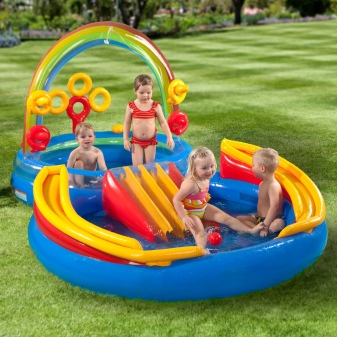

The pools are medium in size and hold about 7 tons of water. Such designs are suitable for bathing children under 12 years of age. Moreover, only two people can swim in them at the same time. The optimal volume of the pool is about 15 tons. For bathing large companies, outdoor structures with a capacity of over 20 tons are best suited.
The depth of frame structures varies from 50 cm to 3 m, width - from one to five meters, length - from three to ten meters.
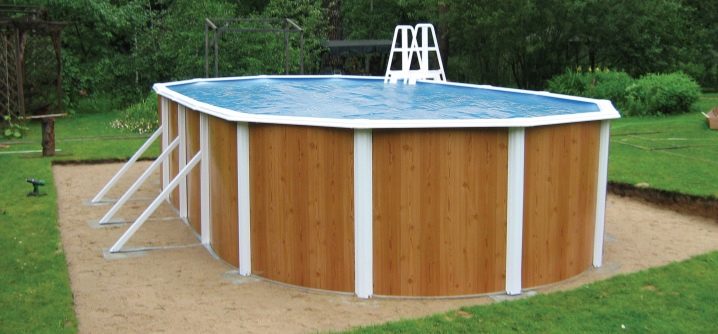
Materials (edit)
The pool capacity is made of three-layer polyvinyl chloride. Two layers of vinyl, one of polyester. The use of such material makes it possible to withstand a load of up to 50 tons more often. That is why frame structures can be quite impressive in size and in terms of the degree of comfort they are no different from stationary pools.
The pool frame itself is made of metal and plastic. In bar structures, steel stiffeners in the form of tubes are used, in sectional ones - metal or plastic modules, fastened together with bolts or other locking joints.
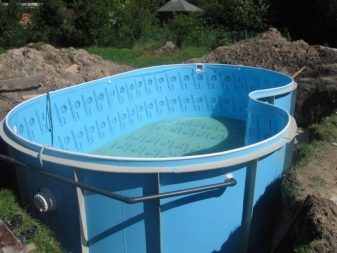

How to choose?
Each buyer assumes how much he is willing to spend on the purchase of a pool. If finance is not a problem, then it is better to turn to the models of European manufacturers such as Mountfield (Czech Republic), Sunny pool, Future Poll Unipool, Krulland (Germany), Gre and Torrente Industrial (Spain), Folkpool (Sweden). The designs of the Canadian company Atlantic Pool have also proven themselves well. The products of these companies have a higher price, which corresponds to the quality of the goods offered.The steel frames of these pools have reinforced stiffening ribs, an increased degree of anti-corrosion protection, as well as the material of the bowl has more layers of film, which makes the water tank even more durable and reliable.
The Atlantic Pool range includes models with a volume of up to 70 cubic meters. This is just a godsend for those who like to swim in their own pool. Large-sized reservoirs are also produced by the Krulland company. You can even dive in them.
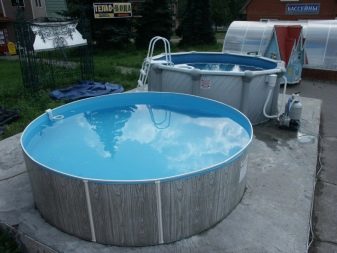

If the budget for purchasing a pool is limited, then you can pay attention to cheaper products, for example, Bestway (China) or Intex (USA).
Intex ponds are safe and easy to care for and use. Safe for health and high quality materials are used for their manufacture. Bestway pools are available in a variety of shapes, sizes and colors, but their lifespan is relatively short. They often fail and they constantly have to be repaired, and not always successfully.

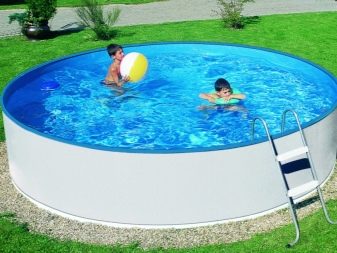
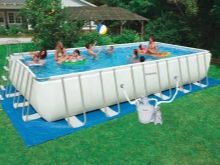
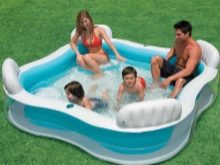

Before buying, you need to decide what size your pool should be. The size of the container for the personal plot is chosen based on the area of the latter, the age and the number of bathers. Among all the variety of products of this kind offered on the market today, it is not at all difficult to choose a pool that meets all the requirements. But it is important to remember that the larger the structure, the higher its cost.

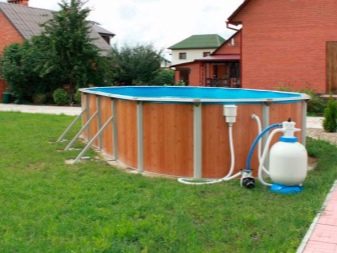

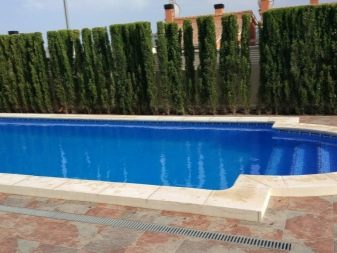
For a summer cottage of standard sizes (6-12 acres), small pools with a depth of up to one and a half meters are most suitable. If the area of the territory is large enough, then why not use part of it for a spacious place for swimming.
If only children will swim in the pond, then for safety reasons, you should not purchase a pool with great depth. If the pool is equipped for all family members - both large and small, it is better to pay attention to the more spacious models.
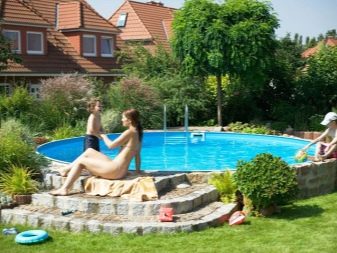
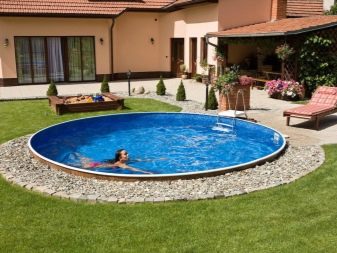
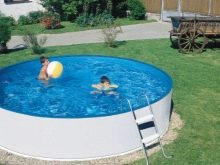


Next, you need to decide on the type of frame - rod or sheet. If at the previous stage it was decided that the pool should be deep, then only a sheet structure can satisfy this parameter. In addition, such reservoirs are more durable and easier to care for. A small body of water can be either leaf or core.
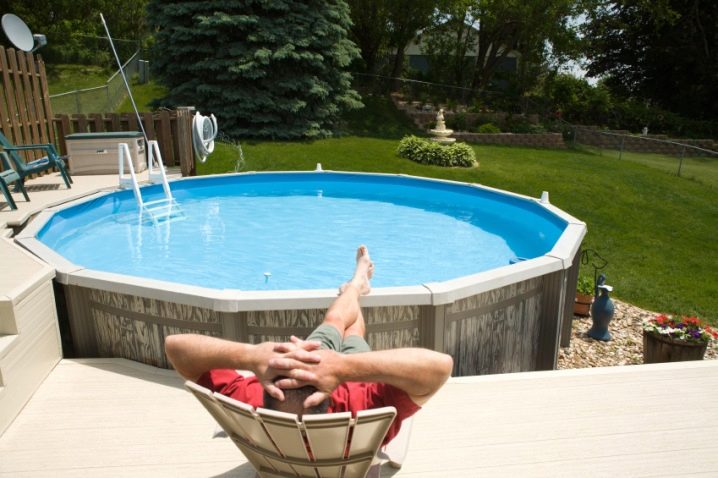
You should immediately decide how the reservoir will be used - all year round or only in summer.
If there is a desire to assemble it at the beginning of the season and disassemble it at the end, then you can purchase a seasonal pool, if you intend to leave the reservoir outside for the winter, then it is better to take a closer look at frost-resistant models - they are more reliable, they will last longer, but they also have an appropriate price. In addition, they are equipped with higher quality accessories.
The skimmer and filters supplied with seasonal reservoirs often do not withstand the loads and they have to be changed to more powerful analogues. The material of the bowl for seasonal ponds wears out quickly, unlike all-season designs.
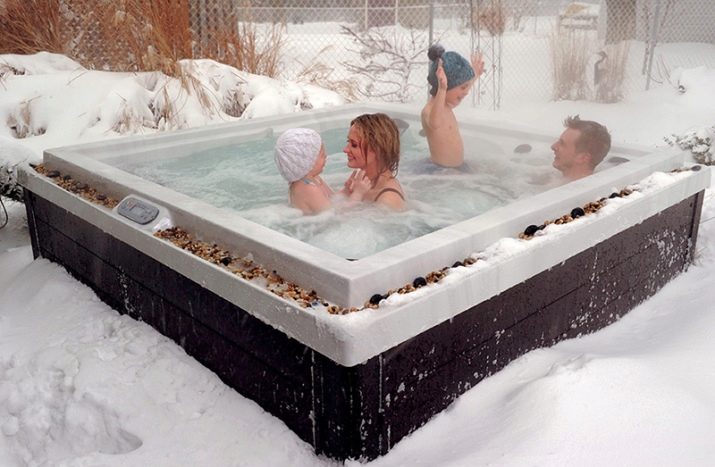
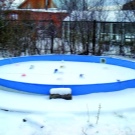
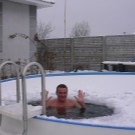
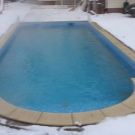

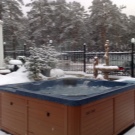
Buying a summer cottage for swimming is not an easy task, because you need to consider all the options, weigh the pros and cons, and only then make such a serious purchase.
How to equip a resting place?
Choosing and buying a frame pond is only half the battle. You also need to choose the right place for it on the site, install it and arrange the area around.
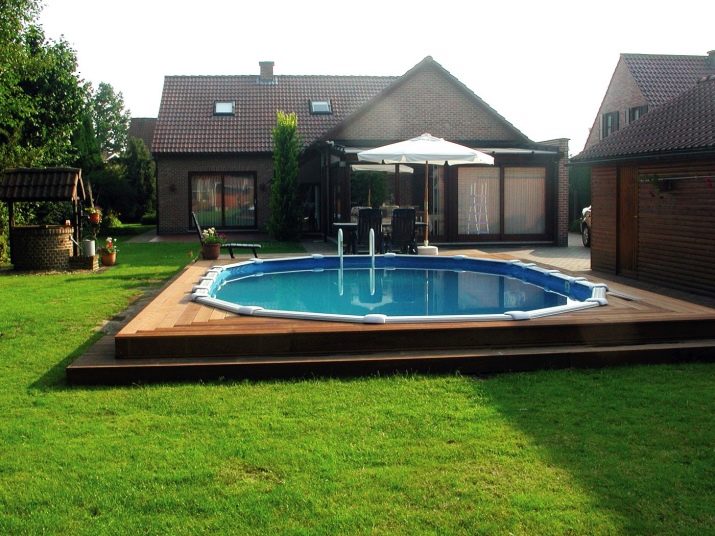

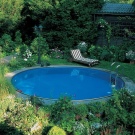

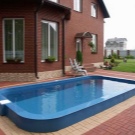
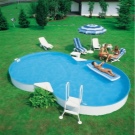
It is better to place the pool in the immediate vicinity of a well or a water supply system for the convenience of filling and flushing it. There should also be a place nearby for connecting electricity and draining water.
The structure should not be installed in the shade of trees, since the water will not warm up enough, and the surface of the reservoir will be contaminated with falling leaves, insects, branches.
There must be enough free space around the artificial reservoir to equip the recreation area and provide free access to it.Electric lights and various mechanisms should not be located directly next to the water. In addition, the location should be selected in such a way that the base of the pool is flooded with rain streams. It is better if the site under the reservoir is raised above the soil level by 0.1-0.15 m. Otherwise, care should be taken to drain the water.
When choosing a site for a pool, preference should be given to relatively flat areas next to a house or a bathhouse. But single placement is also possible.

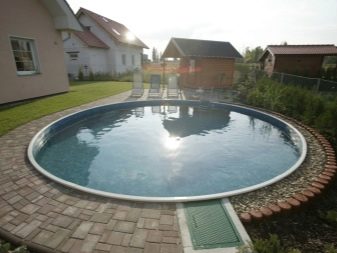
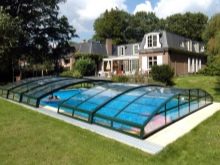


The place chosen for the installation of the structure of the reservoir is cleaned of grass and leveled, and then covered with sand, followed by compaction. As a rule, to prevent subsidence of the soil, damage to the bowl and sliding of the reservoir on the clay base, the site is concreted. It is also possible to insert the frame into the soil. But it is more suitable for all-season pools that winter on the site without dismantling.
To deepen the reservoir, it is necessary to dig a pit according to the shape and size of the bowl. Its bottom is covered with a 15-20 cm layer of sand and gravel, and then poured with concrete. The walls of the pit are best reinforced with bricks.
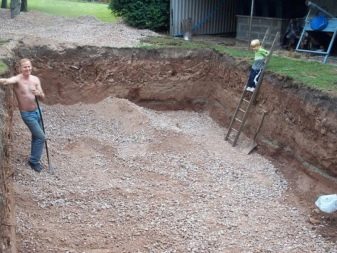
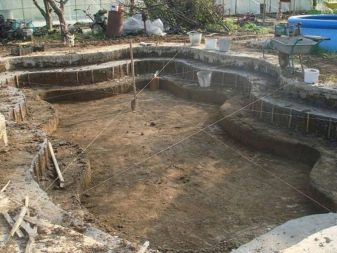
After the installation of the pool, the necessary landscape work is carried out. You can pave the area around the reservoir with tiles, allocate a place for sunbathing, organize a flower garden.
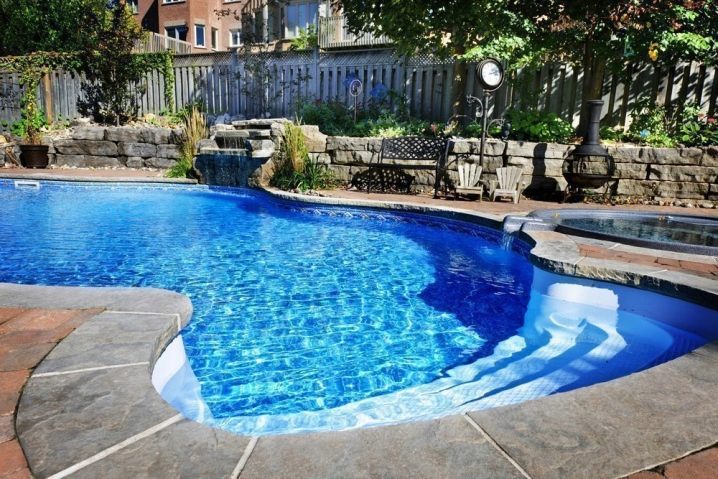
The pool can also be part of the outdoor terrace adjacent to the house. The pond is, as it were, recessed into a wooden flooring, and parasols, sun loungers, etc. are placed around it. A free-standing pool can also be surrounded by a podium with a deck made of decking.
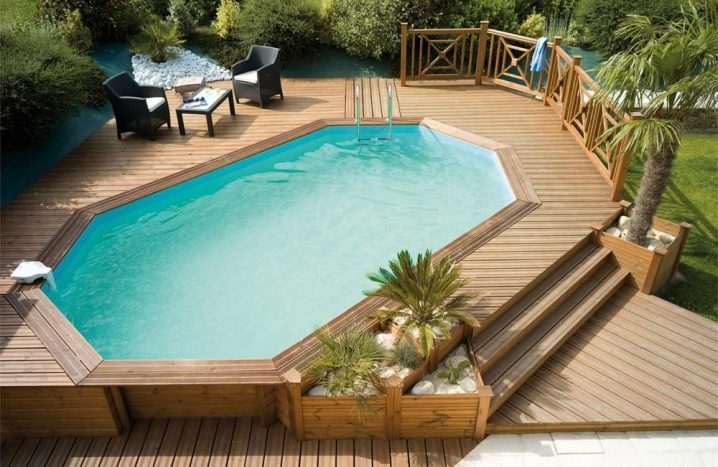
The area around the pool can be simply planted with grass. With this option, it is better to arrange the exit from the reservoir with an artificial lawn. Also, the space next to the reservoir can be covered with fine gravel or eco-tiles can be laid, which is collected like a honeycomb. If necessary, it can be quickly disassembled and moved to any place.
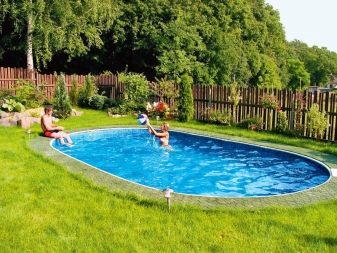
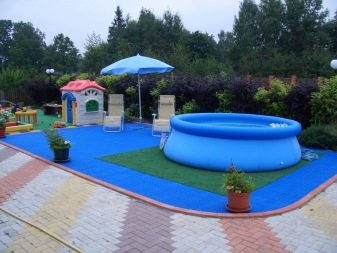
Care rules
The main purpose of bathing pond care is to keep it clean.
For these purposes, the pools are equipped with:
- a special pump for water filtration, which cuts off all mechanical impurities;
- nets in order to catch large debris (foliage, flowers, grass, small branches);
- brushes to clean the walls of the bowl.
To keep the pool clean, you will also need special chemical agents for bacteriological water purification. Some swimming pools are immediately equipped with a salt-based chlorine generator. In the absence of such a device, it is necessary to regularly disinfect the water using chlorine-containing compounds designed specifically for the care of water in swimming pools.
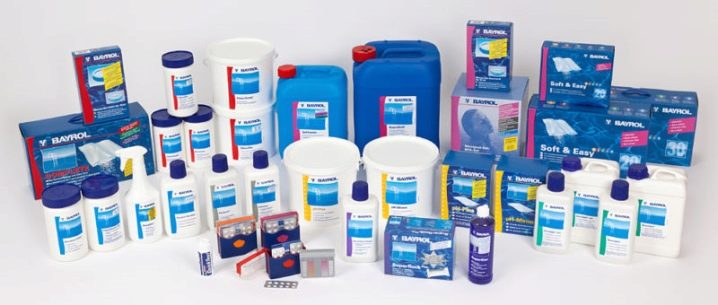
In addition, pool maintenance includes:
- Regular replenishment of the tank with water, since during the summer period the water actively evaporates even in cloudy weather;
- Checking the integrity of structures. Every few days, you should carefully inspect the supporting structures, attachment points and the bowl for damage in order to prevent them in time;
- Regular cleaning of the filter from dirt;
- Checking the bottom of the reservoir for the presence of various items;
- Covering the pool bowl at night with polyethylene or a special awning in order to prevent dust, insects, leaves and other debris from accumulating on the surface of the water;
- Repair bowls as needed. If the PVC cloth is damaged, a patch is put on it from both sides.
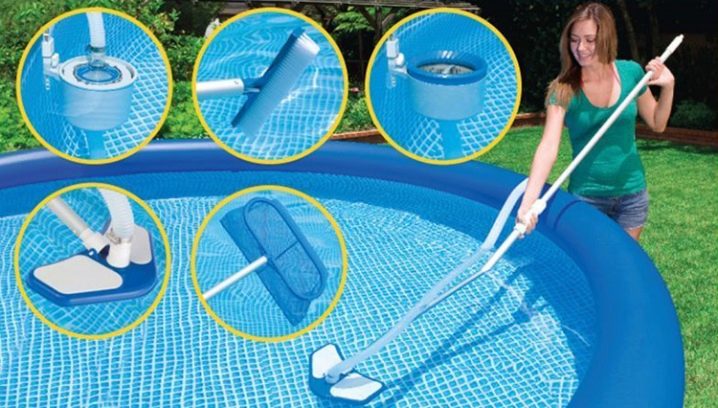
This is with regard to the warm period of time. If we talk about the winter period, then for different types of pools there will be different care. Structures intended for use only in summer are disassembled into elements, washed thoroughly, and then dried and folded in accordance with the instructions.
It is necessary to store the seasonal pool in warm rooms, not allowing it to freeze.
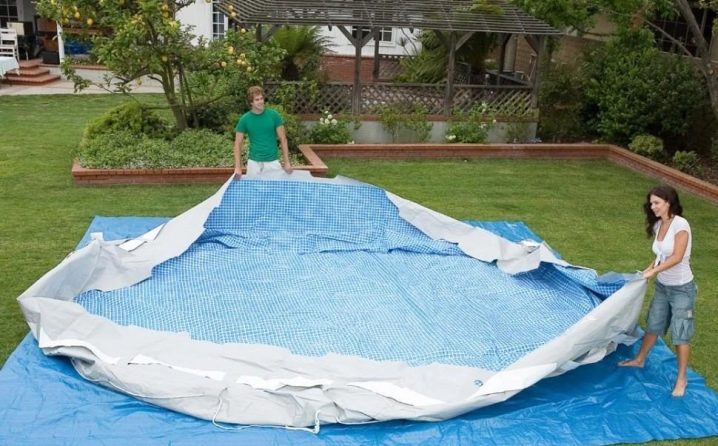
All-season pools do not need to be disassembled.But if it is known that in a given area the temperature in winter can drop below -25 degrees, then such pools must also be dismantled. In warmer climates, all-season frame structures can not be disassembled, but simply mothballed.
They begin to prepare for conservation in the fall, when the temperature has not dropped below 13 degrees. The water is drained from the container, the walls are thoroughly cleaned with detergents. Filters, pumps and other equipment are removed. The pipeline is closed with a plug and the bowl is partially filled with water, to which special preservatives are added.
Water is left in the container in order to prevent damage to the structure in the event of possible spring swelling of the soil. Plastic bottles with weights are evenly distributed in the water, which act as compensators that reduce the pressure of ice on the walls of the bowl. The reservoir is covered with an awning that is resistant to low temperatures.
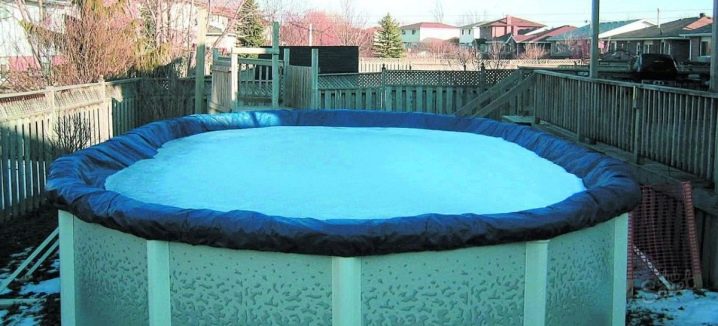
Owner reviews
Based on the reviews, most of the owners of frame pools are happy with their purchase. The presence of your own reservoir on the site makes it possible to fully relax and enjoy water procedures for both children and adults. Frame pools, according to consumers, are quite easy to assemble and stand firmly with proper installation. The owners of frame structures also note a low electricity consumption when the pump is running.
Some owners complain about the need to purchase additional equipment for pool maintenance. But this most likely applies to models from unknown manufacturers. High-quality bathing ponds are immediately equipped with all the necessary accessories for care. And if they are available, the maintenance of the pool does not present any particular difficulties - it is enough to filter the water in time, add chlorine-containing agents and make sure that various debris does not accumulate on the water surface and at the bottom.


Negative reviews are also associated with frequent damage to the bowl and frame, which must be repaired, and not always successfully. Such reviews most often belong to the owners of inexpensive Chinese models.
Many pool owners, and not the smallest ones, are overwhelmed by the fact that they have a place on the site for swimming and water fun for children. The pleasure of this does not in any way overshadow the need to constantly maintain the purity of the reservoir. They even try to share their experiences on minimizing pool maintenance efforts. To do this, it is necessary to cover the surface of the water with polyethylene every day (this is more convenient than a special awning) so that precipitation does not fall into the water.
The film must be removed before bathing. Gnats falling into the reservoir must be caught with a net. To maintain the clarity and purity of the water, the filter must always be on and the cartridge must be replaced every five days.
Special supplements should also be used every five days (preferably in the evening). Once a month, it is necessary to collect small debris from the bottom. Water is poured into the pool once a season.
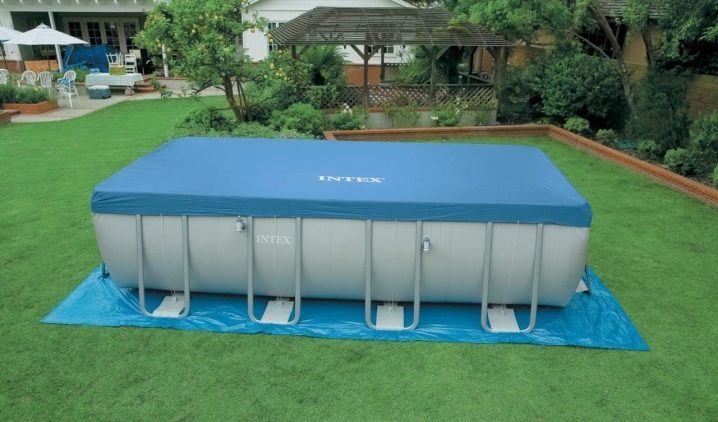
How to choose and install frame pools - the next video.



































































The comment was sent successfully.